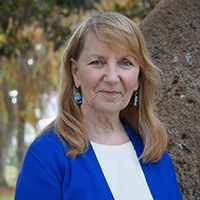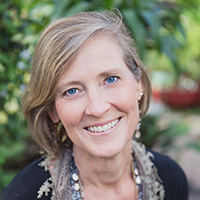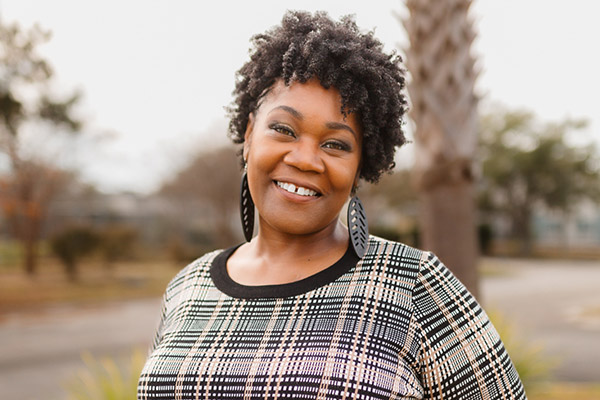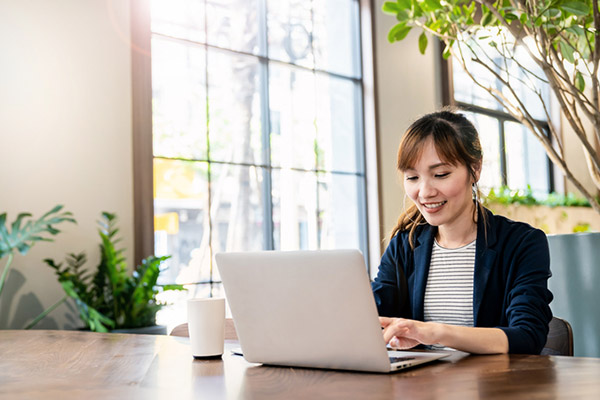03/10/2021

We rejoin Carole, Michele, and David and dive deeper into serving the pregnant client. Our guests discuss the critical thinking skills needed to address this population, preparing for this work with confidence, dispelling bodywork myths, and working with clients with high-risk conditions. We close by honoring Carole’s life’s work and what she’s brought to the massage profession.
Author Resources:
“Breathing, Positioning & Blood Clots: Doing No Harm with Prenatal and Postpartum Massage Therapy During the Coronavirus Pandemic,” by Carole Osborne, Massage & Bodywork magazine, September/October 2020, page 54, www.massageandbodyworkdigital.com/i/1276187-september-october-2020/56.
“Reflections on Touch in a Distanced World: What I’ve Learned (So Far) From COVID,” by David M. Lobenstine, Massage & Bodywork magazine, January/February 2021, page 68, www.massageandbodyworkdigital.com/i/1315831-january-february-2021/70.



This podcast sponsored by:
About our sponsors:
Anatomy Trains
Anatomy Trains is a global leader in online anatomy education and also provides in-classroom certification programs for structural integration in the US, Canada, Australia, Europe, Japan, and China, as well as fresh-tissue cadaver dissection labs and weekend courses. The work of Anatomy Trains originated with founder Tom Myers, who mapped the human body into 13 myofascial meridians in his original book, currently in its fourth edition and translated into 12 languages. The principles of Anatomy Trains are used by osteopaths, physical therapists, bodyworkers, massage therapists, personal trainers, yoga, Pilates, Gyrotonics, and other body-minded manual therapists and movement professionals. Anatomy Trains inspires these practitioners to work with holistic anatomy in treating system-wide patterns to provide improved client outcomes in terms of structure and function.
Website: anatomytrains.com
Email: info@anatomytrains.com
Facebook: facebook.com/AnatomyTrains
Instagram: instagram.com/anatomytrainsofficial
YouTube: youtube.com/channel/UC2g6TOEFrX4b-CigknssKHA
Coaching The Body
Coaching The Body™ is a highly unique approach to therapeutic bodywork that integrates traditional Thai massage techniques, trigger point therapy, and modern neuroscience as a means of efficiently treating pain and restoring normal motion across joints. Manual therapists and movement professionals all over the world have used the Coaching The Body™ approach to relieve pain, unravel complex conditions, and grow their practices. Coaching The Body™ offers both in-person and online training, including a full CTB certification program consisting of 7 body area courses, an apprenticeship program, and a growing online course catalog.
Website: coachingthebody.com
Email: admissions@thaibodywork.com
Facebook: facebook.com/CoachingTheBodyInstitute
Instagram: instagram.com/coachingthebody
YouTube: youtube.com/channel/UCq52UPAjR_POE0fP_oyVgjA
Handspring Publishing
Handspring Publishing specializes in professional-level books for massage therapists, osteopaths, yoga and Pilates teachers, physiotherapists, and other professionals who use touch or movement to help patients achieve wellness.
Handspring Publishing’s books are written and produced to serve the professional and educational needs of health and medical professionals, musculoskeletal therapists, and movement teachers. Its list includes bestsellers like The Accidental Business Owner: A Friendly Guide to Success for Health and Wellness Practitioners by Kelly Bowers, Fascial Stretch Therapy by Chris and Ann Frederick, Fascia: What It Is and Why It Matters by David Lesondak, and the just-published third edition of Pre- and Perinatal Massage Therapy by Carole Osborne, Michele Kolakowski, and David M. Lobenstine. Handspring’s books combine attractive and accessible presentations with an evidence-based approach to writing, including referencing the latest research findings. Authors are drawn from the ranks of highly respected teachers and experts in their area of specialization including Til Luchau, Robert Schleip, Graham Scarr, Gayle MacDonald, and Carolyn Tague among others. ABMP members save 20% off regular list prices. Visit handspringpublishing.com and use discount code abmp20 to order. Shipping is free to all addresses in the United States and the United Kingdom.
Website: handspringpublishing.com
Email: info@handspringpublishing.com
Instagram: instagram.com/handspringpublishing
Twitter: twitter.com/HandspringLtd
Facebook: facebook.com/handspringpublishing
[music]
0:00:00.8 Speaker 1: ABMP members receive 20% off the list price on all Handspring Publishing titles including "Pre- and Perinatal Massage Therapy, Third Edition," "Hands in Healthcare, Second Edition," and "Hydrotherapy for Bodyworkers, Second Edition". Visit handspringpublishing.com to learn about these and other books. ABMP members visit abmp.com/discounts to access your discount code and save 20% on all list prices with free shipping to US and UK addresses. Find your next favorite book at handspringpublishing.com.
0:00:44.3 S1: Frozen shoulder is a mysterious condition that many therapists struggle to resolve. Learn how to reprogram chronic pain patterns like frozen shoulder in just one to three sessions by attending a new free web class from Coaching the Body. You'll learn the number-one muscle influencing shoulder function and how to unlock it, the controversial reason why Coaching the Body says, "Most shoulder massages are a waste of time," what never to do when treating trigger points, three hidden fiber pairings that set up almost all cases of shoulder pain and much more. Seating for the free web class is limited. Go to coachingthebody.com/abmpshoulder to register now.
[music]
0:01:38.7 Speaker 2: Welcome back to The ABMP Podcast and part two of our discussion with Carole Osborne, Michele Kolakowski, and David Lobenstine in our discussion of the new book, "Pre‑ and Perinatal Massage Therapy, Third Edition." Let's hop right in. Michele, tell us a little bit in conclusion about the third edition.
0:01:55.1 Michele Kolakowski: The third edition is beautiful to look at. It is 336 pages with 230 color drawings and photographs, and we also will be having an e-book available. But there are eight chapters, and each of the chapters about pregnancy, labor and postpartum techniques are so easy to find. You come and you scroll through the pages with your thumb, and all 70 techniques are highlighted in these beautifully teal-colored pages that stick out for the reader so that if they're in the middle of their work and they wanna refer to it, it's so easy to use the book and it's your best friend in your office.
0:02:44.6 S2: Alright, listeners, we're gonna dive in a little deeper now into the book. So this is the perfect time to talk about just some really nuanced elements in the new third edition. Can you tell us about the addition of critical thinking skills in the book?
0:02:57.8 Carole Osborne: Oh, yeah! I'd love to talk about that. One of the things that I think therapists need in every moment of their work, they need the ability to be able to bring together vast amounts of information that is global and apply it to one individual. And the process of doing that can be daunting, especially in certain work environments where you have just a tiny little bit of time to be able to get the information from the client, from that individual to be able to work. So we have a few formats that we suggest are of some ways to quickly get that information. We help with prioritizing. For example, what do you absolutely need to know? You need to know where she is in her pregnancy, you need to know what it is she hopes to get out of her time with you, and you need to know if her pregnancy is proceeding along normal expected changes, or are there any medical conditions that are developing that are complicating what is the normal progression of a pregnancy? And it's also really important to know if that person has any proclivities towards more of those complications developing. In other words, is she in a higher-risk category? So those basic pieces of information are crucial for you not only to be safe when you're working with someone who's pregnant, but also to be effective.
0:04:49.2 David Lobenstine: I would just like to jump in as the therapist who has been doing this work the least time of all three of us. I'm probably the most like the average listener who is curious about prenatal massage, and what I wanna emphasize is one of the joys of this book is seeing that there is this unfathomably complex topic, right? There is so much that we still don't even know about what's happening internally when a person is pregnant, and yet, amidst this huge amount of information and huge amount that is still to be discovered, it is feasible to understand what we need to know to give conscientious, clear, considered work to each client. And what's, I think, one of the most exciting elements of this work, that I hope we express efficiently in this book, is that we can approach our clients with such a range of techniques that we have something to give almost everyone. So there are certainly a very clear list of topics or conditions for which massage is contra-indicated.
0:06:21.7 DL: But even for that client who is on bed rest, for example, or who has a severe high-risk condition, if we are doing the proper amount of work with another therapist supervising us or with the assistance of another medical person, there is still good that we can offer to almost every client. And that I think is a true delight to learn as a therapist, right? There is so much we have to offer, but the key is to use those critical thinking skills in order to figure out exactly what will work, what we can give to each person.
0:07:00.0 MK: And I would like to dive in a little deeper with saying that in the first six chapters of the book, we're focusing on healthy pregnancy, labor, and postpartum. And in the seventh chapter of the book, we wanted our readers to be prepared for these more complex and unexpected situations and bring confidence. So we introduce our readers to working with a diversity of clients with special needs, the most common high-risk conditions, not only for pregnancy, but also labor and postpartum. And these people, really, even more so need our stress-reducing and safe pre and perinatal massage therapy. Before we dive into high-risk conditions, that chapter starts with a really thoughtful overview and guidelines for working with the growing number of people using assisted reproductive technology, when and how to adapt massage before, during, and after those treatments. We also provide thorough guidelines for clients on bed rest.
0:08:07.5 MK: And it is true that one in four pregnant people is diagnosed by their medical care provider with a high-risk factor or a complication, and medical problems in the child-bearing year could be really scary. And working with clients can feel really daunting, but we feel like you don't need to have a medical background to care for these clients. You need to gather information from this book and have a willingness to work shoulder to shoulder with these clients and their medical care providers to optimize their care and their outcomes.
0:08:42.6 S2: Let's take a short break to hear a word from our sponsors. Anatomy Trains is excited to invite you to another exciting two-day dissection livestream specialty class, Deep Dive into Joints, April 24th and 25th. This advanced dissection livestream education experience is presented by Tom Myers and master dissector, Todd Garcia. In this two-day event, we will examine the blended nature of support for each of the joint areas. The special dissection livestream format allows us to explore more deeply subjects and areas of interest. Visit anatomytrains.com for details. Now, let's get back to the podcast.
0:09:20.1 S1: And I'm so glad that all three of you have talked about this critical thinking skill piece because just as you were going through that list, Michele, I can just imagine listeners, their breath getting shorter, their anxiety raising a little bit, just hearing the list of potential pathologies that they might be working with. So I think you're right. Always remember, if you have the information, you can make smart choices. You can help the client in the moment.
0:09:44.7 CO: And one really important piece of information to have is the information about what I do and don't know, right? That piece of information is really important. And I've talked to so many therapists, who oftentimes were forced into providing prenatal massage when they really don't feel well educated enough even to work with someone who was having a perfectly normal massage because their prenatal training involved three hours. It's even normal physiology, structural changes, emotional changes of pregnancy, that's impossible for even the best of teachers to convey. So recognizing one's own knowledge limitations and saying, "Oh, yes, there's much that can be done by somebody who knows more than I do," is a really important piece. And our clients, all of our clients deserve that. I refer my sports massage people to somebody else because I recognize I don't know enough about that to really know that I'm helping.
0:11:14.1 DL: And I would also like to add to that. I am particularly aware of this as a man with no internal understanding of what is happening [chuckle] or only the ability to imagine what is happening to a pregnant person, but that actually our not knowing can be a tremendous asset to our clients if we are honest about it. Our clients who are pregnant are told every time they go see their doctor what is happening to them. They don't need us to tell them what is happening to them. They need us to listen, and they need us to sit with them and to work with them, and to be open about the ways that we are able to help them and frankly also open to the limits of our work.
0:12:11.5 CO: That's a really important point, David, because I think, again, pregnant people are inundated with people telling them, telling them what's best for this, all this advice. And really what's very important for us to do is, as you said, to listen to what they are telling us and also for us to be able to elicit from the client, "What do you need?" That's why I said, "Yeah, where are you in pregnancy, but what is it that you need? What is it that you want to get from this time together?"
0:12:56.6 MK: Hey, I just wanted to add something to what Carole and David said about listening to our clients. It is absolutely fascinating and so creativity-provoking in our work as therapists. At the beginning of a pregnancy, a woman will come in and she's like, "Ah, I'm having some nausea today." There's something that we can help with that. She'll come in a couple of weeks later. There'll be something else going on that needs to be addressed. Several weeks later, also the sacroiliac joints begin to hurt. In the third trimester, she might report some edema and be having some symptoms of carpal tunnel. Depending on whether she has a vaginal or cesarean birth, she might have some different things going on in the abdomen and the pelvis. And then postpartum, it's like, "Hey, you have a mom that's got one baby. Oops, you've got a mom that's got twins." So many things that you get to respond to even with one client. The changes from those early weeks all the way through are remarkable, so it's just a phenomenal way to stay creative, challenged, active listen.
0:14:10.2 MK: If you think about any other client that comes in, how much change happens in that 10 lunar months, the time of the birth, and then postpartum as long as that lasts. It's just remarkable to see people's bodies, their physiology, their emotions, their spirits all transformed in this short amount of time.
0:14:31.2 S1: Let's talk a little bit about what massage therapists can do when their clients are in labor, so whether they can be with them physically in the room or are there things they can do to help prepare or teach their client, the mother-to-be, what they can do themselves during that labor time?
0:14:47.9 MK: Yes, yes, yes. [chuckle] There's so much we can do, and this is like one of the most common miracles on Earth, every second worldwide, five babies are born. Why shouldn't we all learn more about birth? But specifically for our readers and the moms and their families, they're gonna benefit from our readers' knowledge about the continuum of care. Not just pregnancy, but what can happen in labor and birth. In this new third edition, we offer some very thoughtful reflections and advice to our readers about all the different ways they might be able to beautifully support birth. Do you wanna attend labors? Do you wanna go on and further your training, either as a birth doula or move into a medical profession as a midwife? What are the practical realities of that and your motivations? I know in my own career, I was able to balance a massage practice and also attend a couple hundred births over the last 18 years, but that's not gonna work for everyone.
0:16:00.5 MK: So we also talk about, if it's not logistically possible, you can have so much fun teaching expectant couples, whether that's, you ask your client and their partner or a family member to come to one of your private massage therapy appointments and you teach the partners some beautiful things that they can use in labor. One of my favorite things to do is to offer to go to their home, so you can use their furniture and their paraphernalia and you show them all these different positions and comfort measures they can use during labor. And the best part of it is at the end when the mom says, "Oh my gosh, honey, that was amazing. You are gonna be the best support person in labor," and you see the partner's confidence just swell up. That, in and of itself, going into birth, when couples or a mom that's single with a support person or another family member feel like they have resources going into labor and there's a high-touch, high-caring labor and birth environment, their satisfaction with their birth skyrockets.
0:17:19.3 S1: Okay, let's talk about myths. Carole, you mentioned a little bit earlier. Are there other myths still lingering out there that people believe about prenatal, perinatal massage?
0:17:29.2 CO: Oh my goodness. How many podcasts? [laughter] How many podcasts are these? No. Yes, there are. And here's the thing, there are many of these myths that are a reflection of the fact that we have some evidence. In some cases, we have a little bit from midwifery, and we have something over here from obstetrics. We got a little something from our own experiences. And then we've got this big thing of all the stuff that we've heard, that they say. And it's just terribly, terribly confusing for the therapist. So one of the things we try to do in this book is to present what we know, to be honest about what we know, to be honest about what we don't know, and to have some discussions about some of the things that we really are still trying to figure out. But that hasn't stopped Michele, David and I, and another 5000 or more at least that I've trained or the three of us have trained, but some of these things are truly myths, and we've got enough information about that. So what do you say, David? Do you wanna give it a go on one of those myths? [chuckle]
0:19:03.0 DL: So there are so many to talk about. I have a few favorites. The first, as Carole mentioned earlier, is that we should never even touch, good heavens, a pregnant person in their first trimester because horrible things will happen. Our fingers can somehow cause a pregnant person to miscarry. It's terribly sad, but this is something that is persistent and has real damaging consequences, I think, in our ability to touch in a helpful way people in their first trimester. The other one that's great is if you rub a pregnant person's feet, you'll automatically make them go into labor, which is not true. I think we talk about this and talk about how to respond to these myths in the book and in our classroom teaching, is that I think there are these two opposing principles that kind of get mucked up. And so the first one is that I think that there's a lot of fear around the pregnant body. This is a deep-set, deeply cultural thing. We have this... We don't know what to do with the pregnant body because frankly, the pregnant body is more powerful than anything that any man has ever done. And so therefore, that translates into a fear of the pregnant body, and unfortunately, us massage therapists do hold some of that. We have this idea that we can break a pregnant person, that we can cause terrible things to happen to a pregnant person.
0:20:42.0 DL: Another persistent myth is that we should only massage a pregnant person gently, that pregnant people shouldn't be given deep-tissue massage or myofascial release. We know from every single one of our clients that that is not true. "Oh my goodness, please go deeper. We need this work." Their bodies need that sustained, careful engagement with their tissues. But then the other corresponding part that I think adds to these myths, the other half of this is that we as therapists have this belief in our own power. We have this belief that we can just magically override the pregnant body's whole process, this deeply ingrained understanding of what needs to happen and when, when the fetus needs to grow and how, when the pregnant person is ready to labor and how, and that we can just by touching an acupuncture point somewhere or another, we can magically make the person go into labor or we can magically do this.
0:21:41.8 DL: So the key is that neither of those things are true. The pregnant body is not fragile, and we as therapists don't have this astonishing ability to make magic happen. The truth is always somewhere in the middle, and I think one of the things that we try to do in this book is to figure out how we can find that middle for each client. We can find that balance where we are very careful in taking very clear intakes and doing the research that is needed for each client to understand exactly where they are at and where there are legitimate concerns about what we do and don't want to do with that client, and then also that we take stock of our own abilities as therapists and so that we don't proceed like we can just magically make things happen, but we do have a very clear understanding of the impact that our touch and our techniques do have on the client. And I think the combination of those two things means that we can approach each client with a very clear understanding of what they need, and also we can take care of them with our hands with a clear sense of what we are able to do and what we shouldn't.
0:22:48.4 CO: One other nuance that I wanna bring into this is, oftentimes, these myths are based on some little piece of information, but that gets glossed over or distorted. So for example, there is a small study that was done in Africa, David, you might correct me on this one, that was on deep massage of the abdomen, and we're talking about really deep massage on the abdomen. It was a very small number of people. But it's a cultural practice in that group of people to do this very deep abdominal massage during pregnancy, and their miscarriage rates are higher. But what they are talking about doing is really going all of the way down to psoas-level deep. So we lose the nuance about abdominal massage by not discussing... We just group all forms of touch as massage. So that same principle applies onto the foot where we think, "Oh, we can't do... You can create some kind of a reflexive response with this focused pressure on the foot, so we better not touch the foot at all." No, we just need to modulate what we're doing on the foot and be sure to include the foot in most cases.
0:24:34.3 CO: Now, one of the cases that I think is really important for us to honor myths is when our client has truly bought into that myth, and she is frightened to have her feet massaged or to have her abdomen massaged and she will be even more anxious if we do that. So if I can't convey a reasonable explanation for why I think this is a safe thing, there's so much else that I can do. There is a tremendous amount. In fact, on her feet, you know about our feet. Actually, relieving edema is so much more about what's happening in the pelvis and the erector spinae and the alignment of the pelvis. That's what's contributing to a lot of the edema. So, "Okay, I won't work on your feet. You're missing out [chuckle] if I don't work on your feet." But you get my point. Yeah, and we have to really honor our client's apprehensions.
0:25:44.7 S2: Listeners, I know that you have totally enjoyed listening to this podcast, and we have only scratched the surface of all of the material that is in this amazing book as well as the knowledge between these three practitioners. But I do wanna close with just... Do you have final thoughts? And we can go around the room here, do you have final thoughts that you'd like to give to our listeners? And we can start with you, Michele.
0:26:08.9 MK: I really hope that this third edition not only brings excellence and education to our entire field so that we can better serve child-bearing women and their families, but I hope that our sisters and brothers in the related professions, whether they're a physical therapist, a nurse, a midwife, a doula, a physician, will join us. This book is really intended to reach all of us and how we can integrate touch to serve humanity.
0:26:45.9 S2: David, final thoughts?
0:26:47.5 DL: Yeah, I just wanna say that one of the most notable parts of writing and revising this third edition was to come face-to-face again and again with the inadequacies of words by themselves. So this is a wonderful book and I am incredibly proud of it and so pleased to be a part of it, but it also goes hand-in-hand with what we do with it. And so I would love to have this book be accompanied by abundant practice for each and every person who has a look. And ideally, you'll be excited enough by what's in the pages to come join us and learn with us in our hands-on workshops.
0:27:31.6 S2: And Carole?
0:27:32.6 CO: I'd love to have folks in our hands-on workshops. I'd love to have folks really consume this book because another reason for me of writing this book and doing what I'm doing at this point in my career is that as I look back, I see that I have... Uh-oh, I'm gonna get all kinds of emotional here. I have had the blessing of following a true calling, and that calling has been to find a very practical way to communicate unity. And that my career has been very gratifying because, as I mentioned before, it has called so much from me, and it's been long and satisfying and lucrative because I've continued to learn. So I hope that this book will prompt people to continue to learn. It is because of taking care of myself, particularly body mechanics, very grounded in almost 50 years of Tai Chi practice as well, and so I really am at this place where I want every massage therapist to have their version of that and that they could have a long, satisfying, meaningful, lucrative practice as well. And I think the three of us are really, really committed to offering that to the rest of our colleagues. And yeah, I guess that's it.
0:29:25.6 S2: Carole, your legacy is duly noted, and the profession thanks you so much for all the work you've done. And I wanna thank all three of the authors for this third edition as well. Carole Osborne, Michele Kolakowski and David Lobenstine, thank you so much for joining us today. And one final thing, where can listeners get the book?
0:29:46.1 CO: Well, our publisher, Handspring Publishing, has a special discount for the folks, who are ABMP members, and so they can get that. You'll have to give the details for that.
0:30:03.7 S1: They can learn more at abmp.com/discounts.
0:30:06.8 CO: Thank you. [chuckle] And of course, we do sell the book as well from my website, which is bodytherapyeducation.com.
0:30:18.5 MK: And I also wanted to add that on the inside cover of the book, there are online resources, which are just extensions of topics that we wanted to go a little bit further on beyond what's covered in the book. And there are also 50 technique videos that are accessible. There's also resources for educators who wanna use this book and our resources so that you can teach this material as well.
0:30:52.0 S2: Thank you so much, Michele, David and Carole for joining us today.
0:30:55.0 DL: Thank you so much.
0:30:55.8 CO: It's been a real pleasure.
0:30:56.8 MK: Thank you.
0:30:57.6 CO: Thank you.
0:30:58.5 S1: Thanks to all three of you for bringing your passion and expertise to this beautiful resource for the profession. We appreciate you.
[music]
0:31:08.3 S1: Members are loving ABMP Five-Minute Muscles and ABMP Pocket Pathology, two quick-reference web apps included with ABMP membership. ABMP Five-Minute Muscles delivers muscle-specific palpation and technique videos, plus origins, insertions and actions for the 83 muscles most commonly addressed by bodyworkers. ABMP Pocket Pathology, created in conjunction with Ruth Werner, puts key information for nearly 200 common pathologies at your fingertips and provides the knowledge you need to help you make informed treatment decisions. Start learning today. ABMP members, log in at abmp.com and look for the links in the Featured Benefits section of your member homepage. Not a member? Learn about these exciting member benefits at abmp.com/more.





